
Presidency Defence Industry President Prof. Dr. İsmail DEMİR answered the questions of SavunmaSanayiST.com – Turkish account of TurkishDefenceNews.com – on the agenda.
SavunmaSanayiST: President, it is known that embargoes in defence industry against Turkey has increased in recent years. It has been mentioned before that there are many more implicit embargoes than those made public. How do you evaluate these embargoes and the reasons behind them? What kind of strategy does the Defence Industry Presidency have, especially regarding the nationalization of critical subsystems?
Prof. Dr. İsmail DEMİR: First of all, let me start with the critical subsystems, which is always on our agenda. This is an ongoing process. Of course, in systems and products that come to the front as embargo, it becomes our priority. We have never given up on this effort, but with the news of the embargo, we think that the industry is working to produce with even more enthusiasm and effort. Embargo decisions are increasing, yes. The reasons are known to everyone. Turkey stands its ground, points out what is fair and what is unfair, which was not always the case. Until today, at various times, there has been an attitude of silencing many injustices or agreeing with Westerners even when what they were saying was wrong.
When we say “That is not true; right is right, wrong is wrong, ” and point to the truth that does not go with the West’s plans, this bothers some people. For example, there is nothing more ridiculous and cocky than someone from any country coming up and saying “Get out of Syria”. There is an incident at my border which directly hurts my country, but this man comes from that far and thinks he can tell me what to do. It’s unacceptable. That’s why Turkey’s stance is right. From time to time, they tried to silence Turkey with embargoes etc. There were those who wanted to defeat with threats.
As you know, we even had to hear things like do this and do that in the terrorist operations. They should know that these will no longer work on us. We may slow down a little bit, but it will be much better for us in the long run because as soon as we get rid of this dependence problem, our self-confidence increases and we can show our stance more easily in the right environment. We see it from time to time, and we will see more in the future that when we say “do what you can” those bullies will put down their weapons.
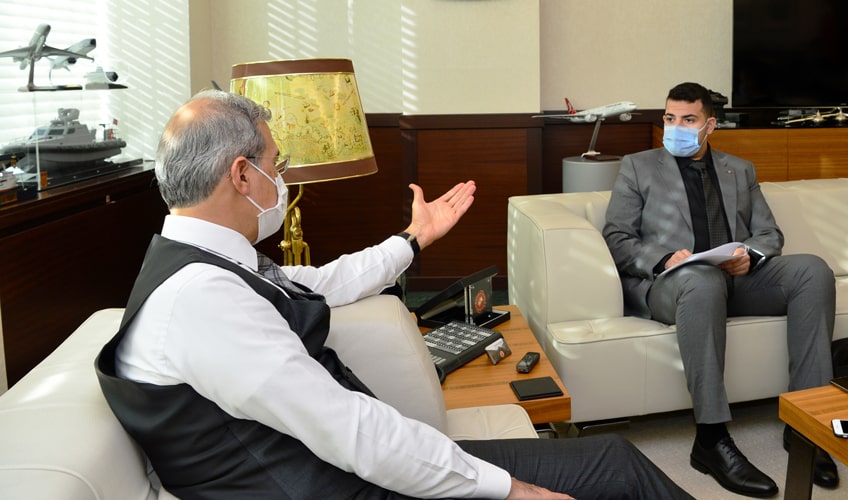
SavunmaSanayiST: Has the Turkish defence industry become a threat to other countries in the export market as a global player?
Prof. Dr. İsmail DEMİR: It has, because some of the embargoes are also present in the products we want to export. As you know, if there is a foreign product in the product, it is necessary to obtain an export permit from that country. We faced some obstacles there too. So, there are attitudes like “Yes you are using it, but you cannot export a product that has a part or component of my country”. This is effective too, but I still believe the main factor here is Turkey’s general attitude. Of course there is also a huge market loss and anxiety. Political pressures are being increased not only in these embargoes but also in potential client countries. In other words, if they prefer Turkish products, they put pressure on their politicians and misguide the public view.
SavunmaSanayiST: We see that the defence industry relations between Ukraine and Turkey increases every day. In recent days senior Ukrainian delegation led by the President of Ukraine, made a comprehensive visit to Turkey. We know that there are studies on UAV and engine subjects between the two countries. What is the latest situation in these fields, and are there any other subjects that are under the works?
Prof. Dr. İsmail DEMİR: Of course, there are many fields, but the UAV and the engine came to the fore. As you know, we supply them UAVs, and even some more activities are requested about that. We’ve been talking about the engines for a long time, too, it has been a little bit of a slow progress, but after this last visit, we hope we will move forward faster. Several engine types being produced in Turkey is on the agenda, cooperating on the engine design is on the agenda, marine projects are on the agenda, and we talk about projects related to the design of the corvettes, frigates and fast patrol boats.
Read More: Ukrainian Navy buys MILGEM and Bayraktar TB2
At the same time, there are some talks regarding the ground and weapon systems. We have already seen the possibility of cooperation with Ukraine in a very wide area for many years, but it took some time to take a step. We have already put extremely concrete and feasible projects on the table. Of course, on the Ukrainian side, things like management changes and staff changes made it difficult to act a little. If stability and determination continues there, it will be possible to move forward very quickly on the subjects I have mentioned.
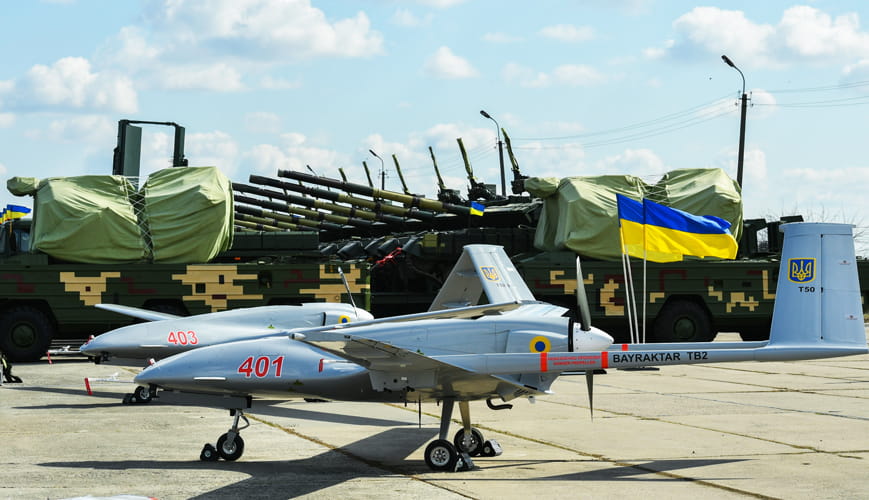
SavunmaSanayiST: Mr. President, after the visit, the President of Ukraine Zelensky made a statement and said, “We will develop a joint air defence system with Turkey.” What kind of cooperation will be made in this field? There was also another statement from the authorities saying that Turkey is supplying S-125s from Ukraine.
Prof. Dr. İsmail DEMİR: S-125, of course, is an old system. They modernized it in a certain way, that is, Ukraine currently does not have an air defence system developed from scratch. But again, they are going through a process of modernizing systems from the former Soviet era and increasing their capabilities. If their current competencies and our existing competencies can come together, we can make a new product. As you know, there are issues such as various ranges in the air defence system. These make up the layered air defence system. Just as the S-125 fits somewhere in the layered air defence system architecture, the S-125 or any system with a slightly higher altitude and range can fit somewhere in the range. In this respect, these are also on our agenda and we are talking about it, but we do not call it “such and such system” in concrete terms yet.
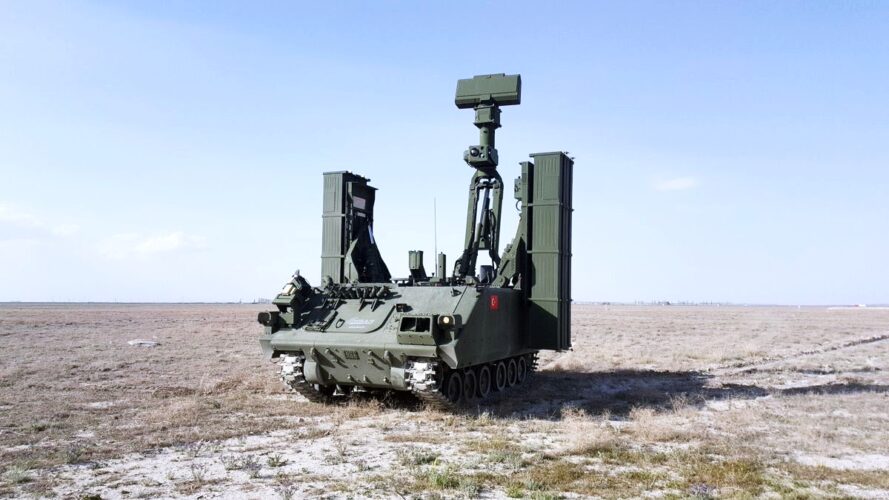
SavunmaSanayiST: Turkish defence industry companies continue their efforts to develop systems that will form the Layered Air Defence Umbrella under the leadership of the Defence Industry Presidency. It was recently announced that some changes were made in the HİSAR-A and HİSAR-O projects. Could you summarize the latest situation in both international and national projects in the field of air defence in order to clarify the subject a little more for the public?
Prof. Dr. İsmail DEMİR: By adding a “plus” to HİSAR-A and HİSAR-O, we decided to increase their capabilities a little more. Since we think that a protection at the HİSAR-A level, more precisely at the HİSAR-A level defined earlier, will not be very effective in today’s operational environment, we have given it a little more capability. HİSAR-O was likewise upgraded to a slightly higher capability. Studies on the design requirements of the SİPER system continues, a design is being put together. Of course, the experiences gained in HİSAR-A and HİSAR-O will be transferred there and the construction of the system will continue. As I said, these three projects, HİSAR-A + and HİSAR-O +, are very close to mass production. However, ASELSAN, SAGE and Roketsan are working in close cooperation for the rapid development of SIPER. We tried to make the due date as short as possible, so we were thinking like the 2022s. We may have a few months delay due to this recent pandemic and embargo. We are working to make up for it though.
Read More: HISAR-A + Air Defence Missile goes into mass production
We have not developed much of a culture of working as a consortium. It also takes some effort to manage three or more companies together and divide the works. Therefore this is also a learning process of a new working system. In the next projects, we will be more accustomed to the multi and consortium culture.
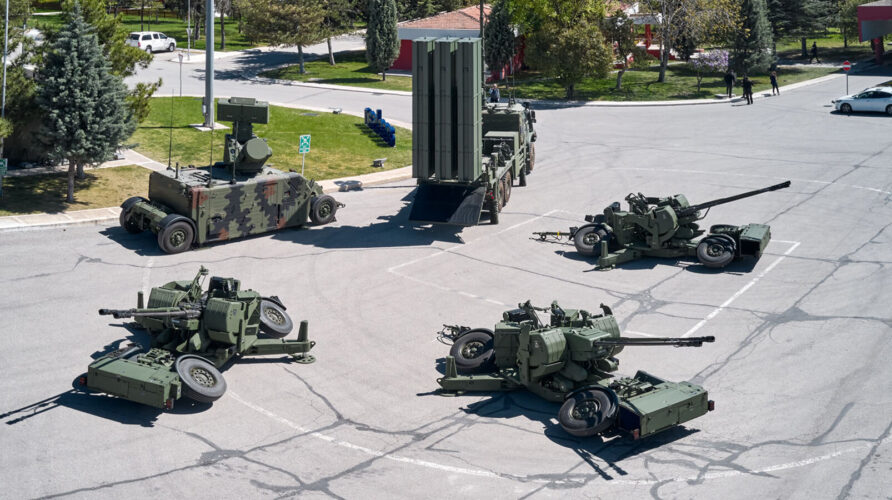
SavunmaSanayiST: Sir, can we set an inventory target for HİSAR-A + and HİSAR-O + in 2022?
Prof. Dr. İsmail DEMİR: Of course, there is no problem with HİSARs. We are almost done with HİSAR-A +. It’s stuck on something small like an embargo, but we’re also improving it. HİSAR-O + will not be too long either, we can easily say 2022. We are trying to force SIPER a little, so that it will come right after. Of course, we can speaks little more clearly about dates after the tests begin. For example, we have a clear path for HİSAR-A +, the tests have been achieved, we need a large number of sub-components for mass production. We have a little trouble in terms of numbers in a small sub-components, but if the problem is solved after the production has started, we will continue on our way very quickly.
SavunmaSanayiST: Turkey started the domestic SİHA (armed UAV) era with platforms such as ANKA , Bayraktar TB2 and KARAYEL. Only a few years have passed since these systems were put into use, and today platforms with higher payload capacity such as AKINCI and AKSUNGUR are being prepared for the inventory. In this context, can you give information about Turkey’s UAV Roadmap?
Prof. Dr. İsmail DEMİR: Turkey is stepping into a multi-use UAVs world. What I mean by multi-use UAVs is this; 5-6 years ago, we were saying that 100 UAVs should be ordered. Now, we have way more than 100 UAVs armed and unarmed. But these are also multi-use, because they meet not only the needs of the Turkish Armed Forces and the Ministry of Interior, but the Ministry of Agriculture and Forestry has started to use it today and soon the Ministry of Interior might start using them in different areas such as traffic, etc. Using UVS for multiple areas will be a hot topic, and it is likely that there will be more use for them in the civilian areas.
You should see the parameters that will provide advantage in the environment of many large and small UAVs, and armed UAVs with various capabilities. Our use of UAV gives us clues on this issue. First of all, an UAV should have an impact on the air defence system. Maybe you may not be able to do this with a single Strike UAV, but you can equip a few UAVs with various functions, it becomes possible to put both electronic warfare and muster elements in play, creating a strike force and installing multitasking functions. This is a concept. UAVs that can see a wider area at very high altitudes, can shoot at a longer distance without being seen, and have greater strike power. This is possible for AKINCI and those that come after it.

If there is a need for an air force departing from the sea at the moment, which are also being discussed, it is possible to develop such UAVs on a very large scale. It means creating an armed naval force. These are multiple, winged things released from the armed UAVs that can fly a certain distance and cause a certain destruction effect. Electronic bombs locked on electronic signals such as UAVs, Kamikazes… There can be many types of products, this is about planning what you will do in the operational environment, how you will neutralize the enemy elements according to the characteristics of the operational environment and performing tasks with UAVs that have various capabilities.
I think the UAV subject will continue rapidly by increasing their capability. For example, a drone carrying air-to-air missiles can easily drop a warplane in the air.
SavunmaSanayiST: The fact that Turkey is making wonderful accomplishments with each passing day in the field of Unmanned Aerial Vehicle is accepted by everyone. So, will we see the same success in the field of Unmanned Ground Vehicles (İKA) and Unmanned Marine Vehicles? Is there a demand in this direction?

Prof. Dr. İsmail DEMİR: We’ll see. We organize competitions on that subject, we make efforts for some of our companies, we say “do your best”, and we pay attention to everyone who does this very carefully. On land, there are topics such as adaption to natural terrain conditions and choosing between remote or autonomous control. The autonomous system has its own challenges and they must be overcome. There are also situations where there may be a control problem at sea, especially for submarine platforms. Overcoming these is a matter of research. Apart from that, if certain features of the products match with its known parts, it is possible to get very fast results.
We always rub elbows with the Forces – sometimes there is demand, sometimes we form the demand in consultation, sometimes we make demands by saying “it should be this”. Sometimes we even make the product and give it to them and say “look at this, use this.” Various models are possible.
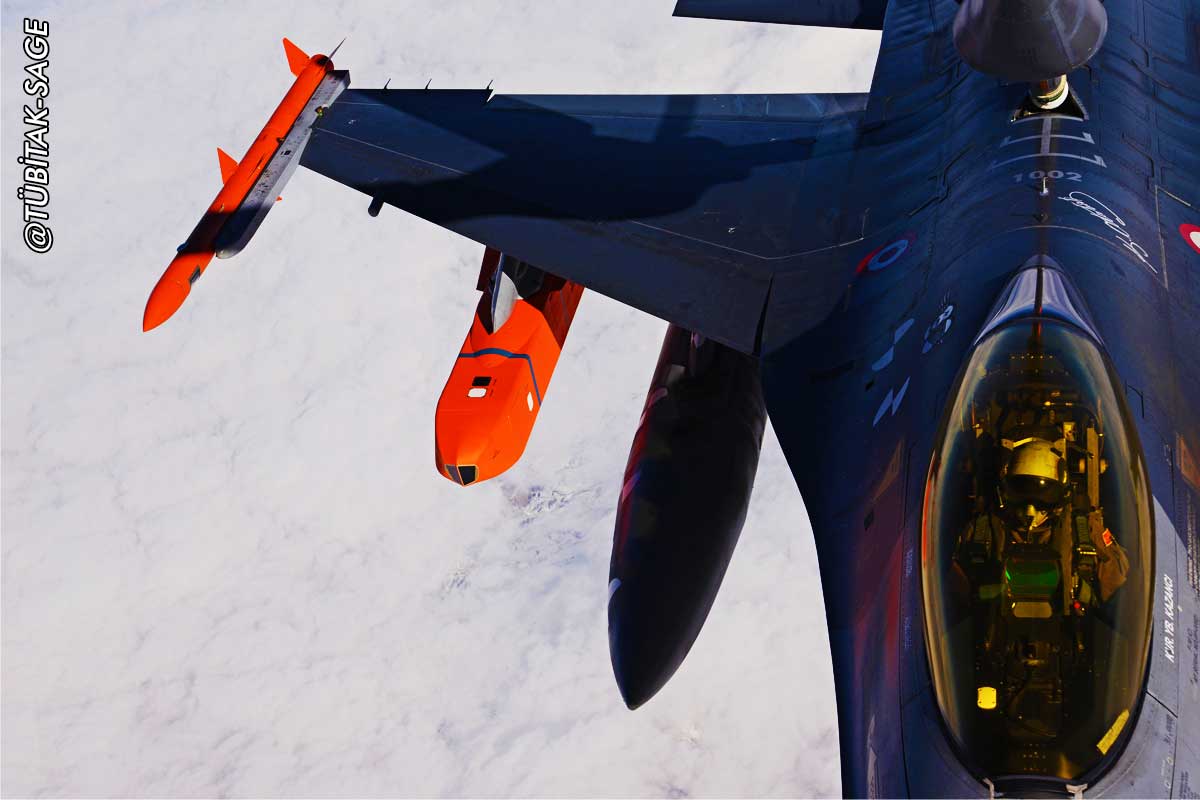
SavunmaSanayiST: Within the scope of the Presidency’s Second 100-Day Action Plan, it was decided to procure 415 additional SOM Cruise Missiles. At what stage are we, regarding the serial production of the SOM Cruise Missiles? Is there a problem especially with the supply of the TR-40 engine?
Prof. Dr. İsmail DEMİR: Mass production continues, there is currently no official attitude regarding the procurement of the TR-40. We already have an engine that will continue production for a certain period of time. There are also alternative engine studies and supplies. Some minor design changes to the alternative engine may eventually be required. This has already been studied by my friends. In this respect, there is no problem in the short term, I can say that we have taken measures to solve it in the long term.
When it comes to cruise missiles, Turkey will be even better. Hopefully, we will see more advanced systems in terms of both range and payload.
SavunmaSanayiST: Sir, is it the national engine KTJ-3200 or the Ukrainian solution that is meant by the alternative engine?
Prof. Dr. İsmail DEMİR: In order not to put all the eggs in one basket, we are also making connections with Ukraine. On the one hand, we need to ensure that our own engine is used. Activities continue to increase the performance of our own engine, so I can say there are three channels; using the first available engine, supplying engines from Ukraine – we are even discussing taking it to the next step and forming an assembly line in Turkey-, and continuing to increase the reaction force of our own engine and have an engine that operates for a longer duration.
SavunmaSanayiST: Can you give me information about the latest situation in Turkey, which will move GEZGİN Missile to the top league in the area of cruise missiles?
Prof. Dr. İsmail DEMİR: GEZGİN will of course be a system that has a longer range and can carry more payloads. In that regard, again, the engine is the main element. We work on the engine, we are also hopeful about the design after the engine, because a lot of experience has been gained so far. These cruise missiles will perform various functions in various ranges and capabilities. So while talking about an air to ground SOM, we also talked about the ATMACA that will be launched from the sea to the sea, its submarine-launched models may soon emerge, and again the cruise missiles launched from land to land. Our roadmap on that issue will continue.

SavunmaSanayiST: The TCG ANADOLU Amphibious Assault Ship is planned to enter the Turkish Naval Forces Command inventory in the near future. You know the process regarding the F-35. In this context, which aircraft are planned to be used in TCG ANADOLU? Does the Navy have a request in terms of helicopters and UAVs?
Prof. Dr. İsmail DEMİR: Armed and unarmed UAVs are already in use in the Navy. There are also demands for helicopters for general purpose etc. to work in the marine environment, because helicopters that will work in these areas need to be a little more special. The Navy has these demands and I hope they will be met.
The subject of UAVs and armed UAVs that will take off / land from naval platforms is on our agenda. If Turkey will have an air force that will launch from the sea, knowing the number of aircraft in the world with these capabilities and the models of the ships that could be used by these aircrafts, we will have armed UAVs specially designed and equipped with special capabilities for use in ANADOLU ships and similar ships.

SavunmaSanayiST: In recent years, the Naval Forces Command, which has been in an increasing operational tempo due to the Greek arguments in the Aegean and Eastern Mediterranean, and the crisis environment in Libya, successfully performed the tasks assigned to it and continues to do so. All these events have once again demonstrated the vital importance of military maritime projects, especially MİLGEM undertaken by our defence industry. However, following this process, the public debate on whether the Naval Forces Command needed a quantitative increase was ignited. In this context, what are the platforms that can be included in the force inventory in a cost-effective short-medium term?
Prof. Dr. İsmail DEMİR: Of course, the discussions are getting heated, but the thing about marine projects is, it may not result in the short term. So besides making a plain shell, you put battle management system, weapons etc. inside it and this takes time. While the 5th ship in the MİLGEM series is being built, work on the 6,7 and 8th ships will continue and they will be done. TF-2000 is on our agenda, and the TF-2000 should be launched. Our submarine projects are known. We should not only build the submarine, but also have expertise and domestic production for both cruise missiles and torpedoes that we will launch from the submarine.
Of course, the combat management system of our old ships etc. is also on the agenda. This modernization process continues on both submarine and surface platforms. Of course, as the discussions gets heated in the sea, we need to speed up our projects so that we take a preliminary design and show the relevant product without waiting for demand.

SavunmaSanayiST: F-16 Fighting Falcon warplanes in the Block 30, Block 40, Block 50 and Block 50+ configuration make up the main striking power of the Turkish Air Force Command. Could you tell us about the latest situation in ÖZGÜR Modernization and AESA Radar projects, which are of high importance for these F-16s?
Prof. Dr. İsmail DEMİR: ÖZGÜR has now reached a certain maturity. We’ve tested it, and it’s fine, now we can say “Our F-16s are on their way to FREEDOM (ÖZGÜRLÜK)”. The first implementation of the project has been achieved, we expect the application to become widespread.
Work continues on the AESA radar. In a very short time, we will have installed the AESA radar on our F-16s, and these two studies were the steps we had to take on the National Combat Aircraft. We think that the modernization of the F-16s in this sense, even the structural and avionic modernization, will further extend the life of the aircraft.
SavunmaSanayiST: Mr. President, can we see AESA radar in AKINCI before F-16?
Prof. Dr. İsmail DEMİR: We can. This AESA radar will go gradually. The final phase will end after a few years, but the first models will continue to be developed as is the way in aviation.
SavunmaSanayiST: The export target of the Turkish Defence and Aviation Industry sector for 2023 was designated to be 10.2 billion dollars. As of the end of 2019, approximately 3 billion dollars of exports were made. What do you think needs to be done to reach the 10.2 billion goal? In this context, is there a message you want to give to Defence Industry Firms?
Prof. Dr. İsmail DEMİR: Of course, the pandemic affected many things. It may not be easy for us to make predictions from the beginning. Even during the pandemic, we have passed certain stages, and events continue in the hot regions. We hope to achieve this increase until 2023. That is possible by providing export, especially in platform projects.
It seems that one of the biggest obstacles we face in exports is, if the product is not completely domestic, problems such as imposed embargoes on such and such subcomponents, and not granting export permission. A criticism can be made here: “Sir, why didn’t you make all your products local then?”. Many countries in the world supply various subsystems in order to make their product economical for the countries with the highest technological competence. This is a normal thing, but the attitude shown towards Turkey affect us a bit. However, as I said, we are hopefully taking steps to compensate for that effect, and therefore we say that the exports will continue. We want to bring more value-added products to the agenda in exports. Especially as long as the customer is satisfied with our high technology products, Turkey’s reputation will increase, after some time, countries will get used to seeing and using Turkish systems.

SavunmaSanayiST: In the defence sector, where complex systems with high technology are studied and therefore the initial purchase and maintenance costs of the products are quite high, the financial support provided by the producer country is of great importance for the supplier countries. In this context, in the past, there was an agreement between your Institution and Turk Eximbank that the financing needs of countries that plan to purchase defence equipment from Turkey will be met by Turk Eximbank loans. Could you tell us about the current situation in this field, the financial demands of the suppliers and the planned works in the future?
Prof. Dr. İsmail DEMİR: Until now, we do not have an export blocked just because there is no credit available. But we are constantly working on this issue. It is a bit more difficult to handle defence industry issues, especially for Eximbank. Therefore, it is necessary to find other sources of credit. As a policy, Eximbank does not want to provide incentives and support on a subject of weapons and products of the defence industry. But ultimately what we call manufacturing technologies works, the products that come out of there will not be weapons, maybe it will be something the user can put a weapon on later, but it is given as a product in its own invention.
SavunmaSanayiST: Mr. President, thank you very much for your time.
Source: TurkishDefenceNews.com

